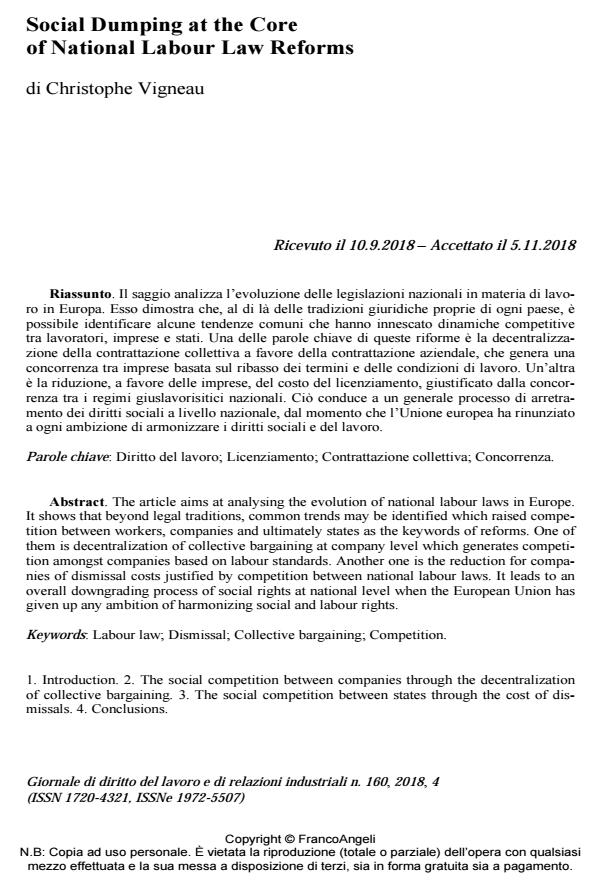Social Dumping at the Core of National Labour Law Reforms
Journal title GIORNALE DI DIRITTO DEL LAVORO E DI RELAZIONI INDUSTRIALI
Author/s Christophe Vigneau
Publishing Year 2019 Issue 2018/160
Language English Pages 15 P. 871-885 File size 208 KB
DOI 10.3280/GDL2018-160008
DOI is like a bar code for intellectual property: to have more infomation
click here
Below, you can see the article first page
If you want to buy this article in PDF format, you can do it, following the instructions to buy download credits

FrancoAngeli is member of Publishers International Linking Association, Inc (PILA), a not-for-profit association which run the CrossRef service enabling links to and from online scholarly content.
The article aims at analysing the evolution of national labour laws in Europe. It shows that beyond legal traditions, common trends may be identified which raised competition between workers, companies and ultimately states as the keywords of reforms. One of them is decentralization of collective bargaining at company level which generates competition amongst companies based on labour standards. Another one is the reduction for companies of dismissal costs justified by competition between national labour laws. It leads to an overall downgrading process of social rights at national level when the European Union has given up any ambition of harmonizing social and labour rights.
Keywords: Labour law; Dismissal; Collective bargaining; Competition.
Christophe Vigneau, Social Dumping at the Core of National Labour Law Reforms in "GIORNALE DI DIRITTO DEL LAVORO E DI RELAZIONI INDUSTRIALI " 160/2018, pp 871-885, DOI: 10.3280/GDL2018-160008